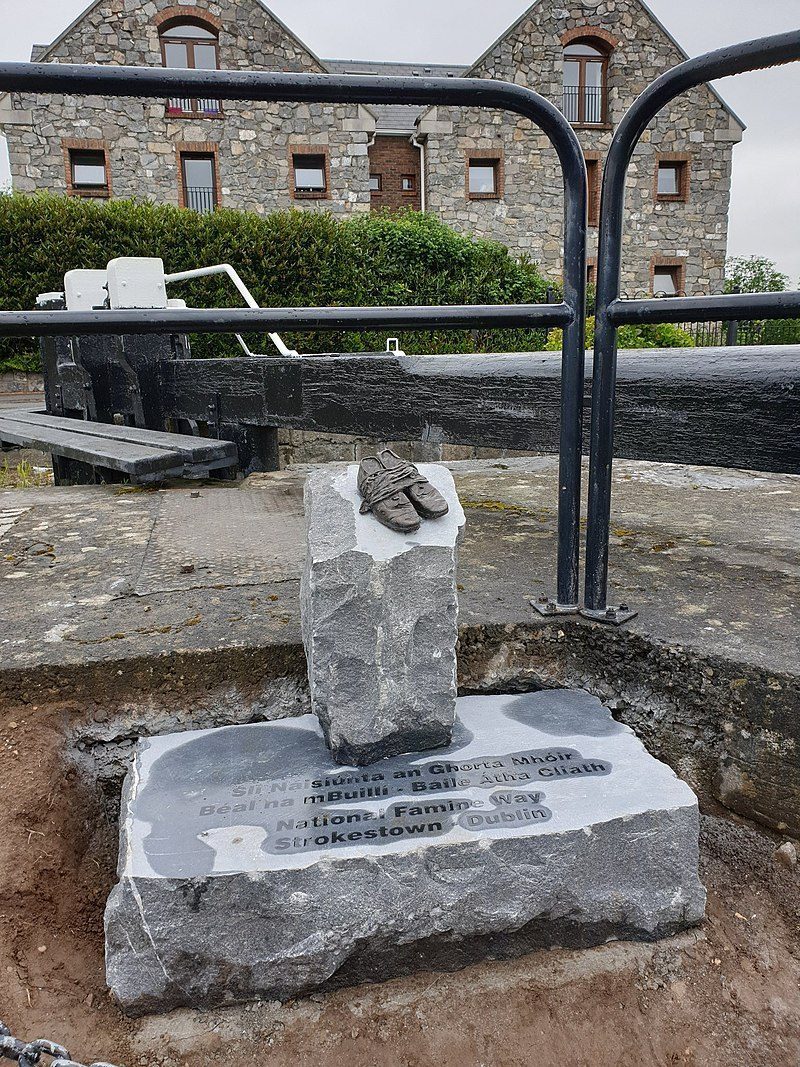The guide focuses on the walk of 12-year-old Daniel Tighe, ‘Missing 1490’, who survived the terrifying transatlantic journey from the Irish countryside to Quebec in 1847. Vignettes reimagining Daniel’s journey was written by author Marita Conlon-McKenna, and are connected to markers featuring over thirty pairs of bronze children’s shoes along the route.
The ‘Missing 1490’ refers to the 1,490 emigrants who walked from Strokestown, Co Roscommon, to Dublin at the height of the famine in 1847. These emigrants walked to join “some of the worst coffin ships” travelling to Liverpool, and subsequently Quebec in Canada. The walkers were tenants of local landlord Major Denis Mahon, who offered them the grim choice of emigration (through “assisted passage”), starvation on their blighted potato patch farms, or a place in the local workhouse.
The trail will be open year-round to walkers and cyclists and is detailed in a new, downloadable OSI Trail Map. As part of the initiative, a 14-page passport and guide is available to buy for €10, with 27 stage stamps that can be collected along the trail.
The 21st-century trail is a collaboration between the National Famine Museum, the Irish Heritage Trust, Waterways Ireland, EPIC: The Irish Emigration Museum and several County Councils along the route. After leaving Strokestown, walkers and cyclists “set off on a journey that takes you through some of the most unspoiled countryside in Ireland”, said John O’Driscoll, General Manager of the National Famine Museum.
The initial 20km section to Clondra is along “quaint country road”, Callery adds, but from there it joins the Royal Canal Greenway, with signposts and trailheads guiding walkers and cyclists through six counties. As well as linking Ireland’s Hidden heartlands and Ireland’s Ancient East, the trail is topped and tailed by museums – the National Famine Museum in Strokestown, and EPIC, and the Jeanie Johnston replica famine ship in Dublin. Users can dip in and out as they like, but anyone picking up 27 stage stamps can collect a Camino-style “completion certificate” at the end from EPIC.
Read more on the route at Independent.ie
Read more on Ireland.

